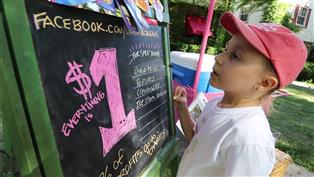Bring Your Own Technology draws mixed reactions
Disparity in what kids have access to could be sticking point
In an effort to effectively plan future learning opportunities in a technology dominated world, the Wauwatosa School District has embarked on a fact-finding process to determine what personal devices exist in the district and whether they may be able to be integrated in and outside formal classrooms.
BYOT survey
In mid-February, the district surveyed parents to determine the possibility of establishing a concept called "Bring Your Own Technology," in which students would bring personal mobile computing devices with them to school and use them for educational purposes when appropriate and permitted by their teachers.
"We're investigating the potential by soliciting community feedback," said Jamie Price, the district's technology coordinator. "From an overall perspective, if kids have any kind of device including a netbook or tablet or smartphone, these devices can be used to enhance learning in the classroom and even extend learning beyond. There are a lot of advantages to being able to have student interact with teachers and other students on assignments without being tied to the time they are in class."
To ensure that this technology extension is feasible, Price said, the district will need to survey all stakeholders, including students and teachers.
Mixed results
Current results from parents show that of the 1,003 surveys completed, respondents represented an almost even three-way split between elementary, middle and high school. Just more than 75 percent of parents said their children had access to a personal mobile computing device. Of those parents indicating access to more than one device, 73 percent said there was access to a laptop or netbook, 45 percent said a tablet, another 45 percent said a smartphone and 35 percent have access to an altogether different type of personal computing device.
Parents were split in their attitudes regarding allowing their children to bring a device to school if they owned one, with 45 percent saying they would allow it, 21 percent saying they would not allow it and 34 percent undecided.
Individualized comments included about 15 percent expressing a desire for the district to implement a BYOT program for students, another 15 percent expressing a desire for the district not to implement BYOT and "a large number" voicing concerns about theft and liability.
Social aspect
Another concern was about equity issues and the inability for all district families to have access to devices without economic assistance.
"The tough part about a program like this is not technical," Price said. "It's the social impact."
Price explained that the difficulty in establishing BYOT may be that not all students have the devices and those that do have devices of differing quality.
"We can connect most any device to our system," he said. "It's just that those student who have older model devices may not want to bring them to school."
Superintendent Phil Ertl said the disparity "is part of the issue we really need to look at. The good thing about doing this is that students can work on devices they are familiar with and know how to use. That's a real advantage."
The pluses, Price said, outweigh the difficulties, which is why the district will continue the survey.
Further explanation needed
"One of the other issues we discovered as we started to survey is that not all parents understand what BYOT is, so we will need to do more communication and education about that," Price said. "We are not trying to put the responsibilities of technology on parents' backs. The district has invested a lot in technology. We just want to be able to extend the advantages."
More from News and Features
- Anodyne Coffee plans to open location in Wauwatosa Village
- Wauwatosa Meetings: Aug. 4
- Video: Wauwatosa girl's curbside ice cream stand raises money for the hungry
- Wauwatosa News and Notes: Hands-only CPR training offered; Firefly Art Fair is Aug. 6-7
- Wauwatosa Ask Now: Why are there barriers and fencing along the North Avenue bridges over the Menomonee River?
- Mystery Photo Contest: July 28
- Wauwatosa gears up for National Night Out event, this year at the zoo
- Election 2016: Wisconsin's 4th District candidates weigh in
- Wauwatosa's Luther Manor residents share smiles through flower delivery
- Wauwatosa Police Report: July 17-23














